Advertisement
As triple-digit heat sets in, Phoenix races to address downtown homeless encampment
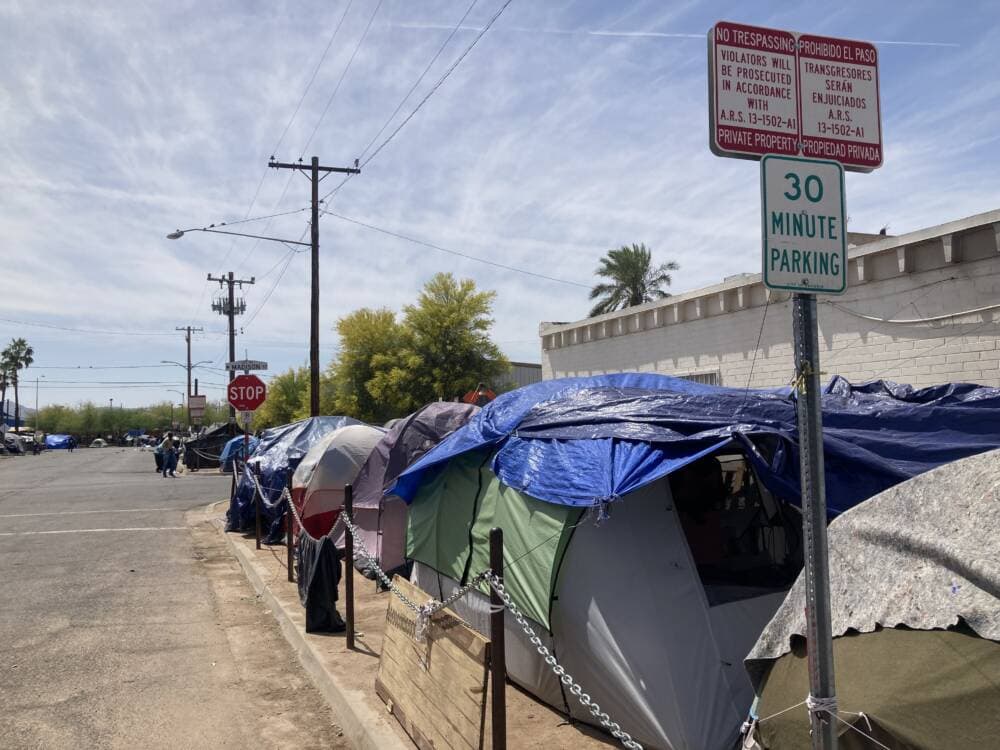
Over the past several years, a large encampment of people living on the streets in the city of Phoenix has ballooned into a crisis.
At times, up to 1,000 people have erected tents and tarps in a neighborhood between the copper dome of the state capitol and the shimmering office towers of downtown.
The makeshift camp is known locally as “the Zone.” It’s at the center of multiple lawsuits and has become a symbol of a growing problem across the United States. According to data released this week, homelessness in Metro Phoenix is up 46% since 2019 — the increase is a product of sky-high housing prices and the lingering economic consequences of the coronavirus pandemic.
“The struggle is real,” says Gwendolyn Blevins, who has experienced homelessness and now lives in an apartment inside the Zone. “You got to be strong minded to survive in this place.”
At least a dozen tents are set up within sight of her apartment building. Blevins says drug use, fights and uncontrolled fires are commonplace.
In fact, this neighborhood has attracted people in need of help for many years. The state's largest homeless shelter is nearby. There’s also a place to get a hot meal and a clinic to see a doctor.
But recently, residents say something has changed.
As homelessness rose, the number of people living in the Zone grew rapidly, too.
On block after block, people have brought in wheelbarrows and shopping carts full of personal belongings. There are couches, coolers and clothes lines.
“It needs to be cleared,” Blevins says. “Especially for those who don't want to act right.”
‘A recipe for death’
The process of clearing the neighborhood has already started. A judge ordered the city to restore order by July 10, when a lawsuit brought by local residents is set to go to trial.
July is a dreadful time of year for people who live unsheltered in Phoenix, a sprawling desert city where summer temperatures routinely reach above 110 degrees.
Last year, 425 people died from heat exposure in Maricopa County, where officials say in recent years, people experiencing homelessness have accounted for an increasingly large share of all heat deaths.
It is a danger that Thebe Monyamane knows first hand.
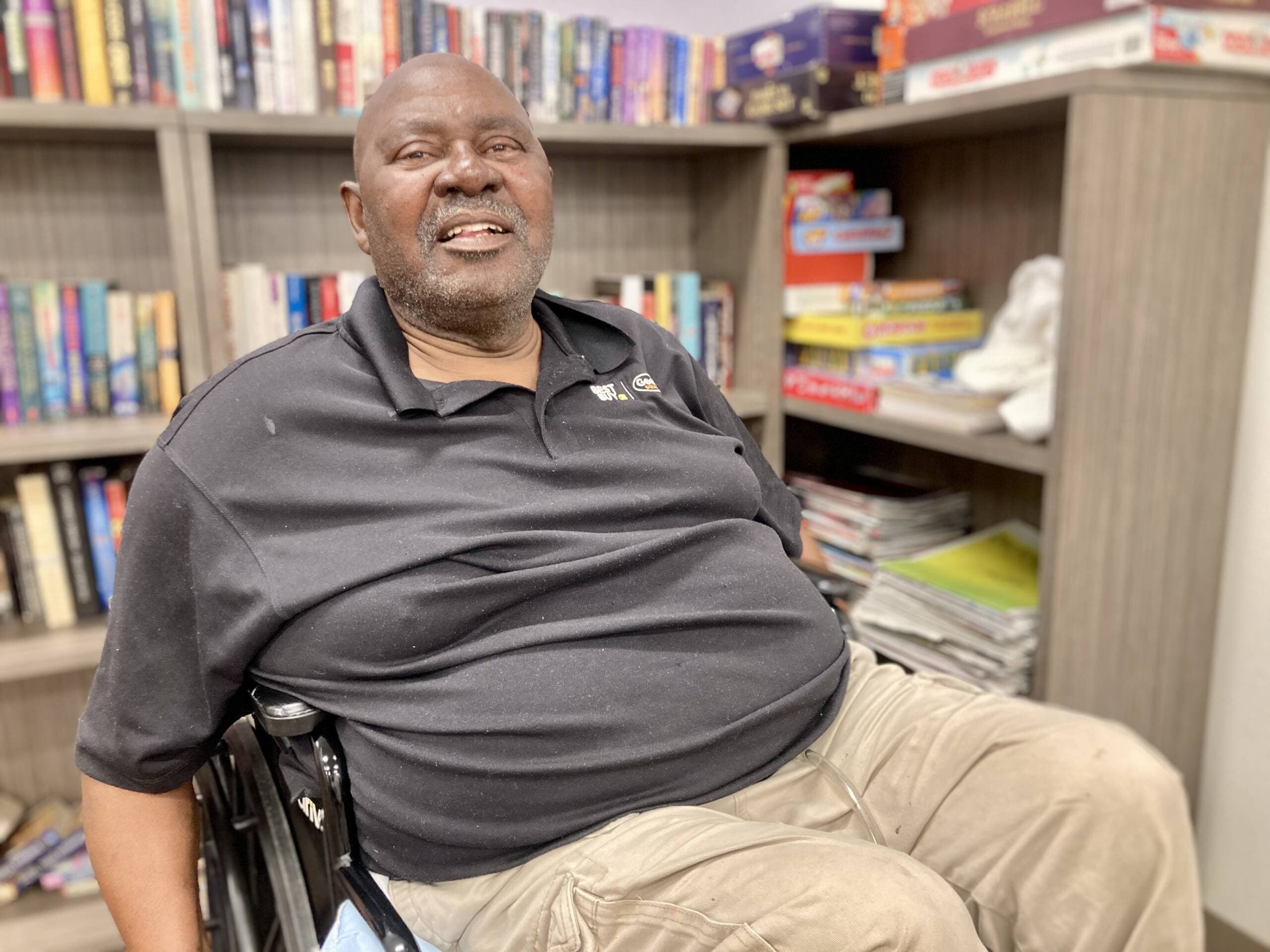
He’s been recovering from a heart condition at a medical respite center inside the Zone for eight months. Monyamane says he’s been homeless for a decade and has suffered several bouts of heat stroke.
“The fourth stroke is when the fluids went in my heart,” he says. “I stopped walking that day. I couldn't control my blood pressure. This is the only place able to control my blood pressure.”
The heat makes everything more unbearable, and the patients are going to be sicker as the July deadline to clear the camp approaches, according to Tara Ankrah. She’s a registered nurse and program manager at the respite center, which is run by a nonprofit called Circle the City.
“We have all these tents here because there is access to medical care nearby,” she says. “If you’re spread out, you don’t have that nearby and that’s just a recipe for disaster and death.”
Lawsuits add pressure to act
No one would dispute that the living conditions inside the encampment are dangerous, however the problem has been difficult to solve.
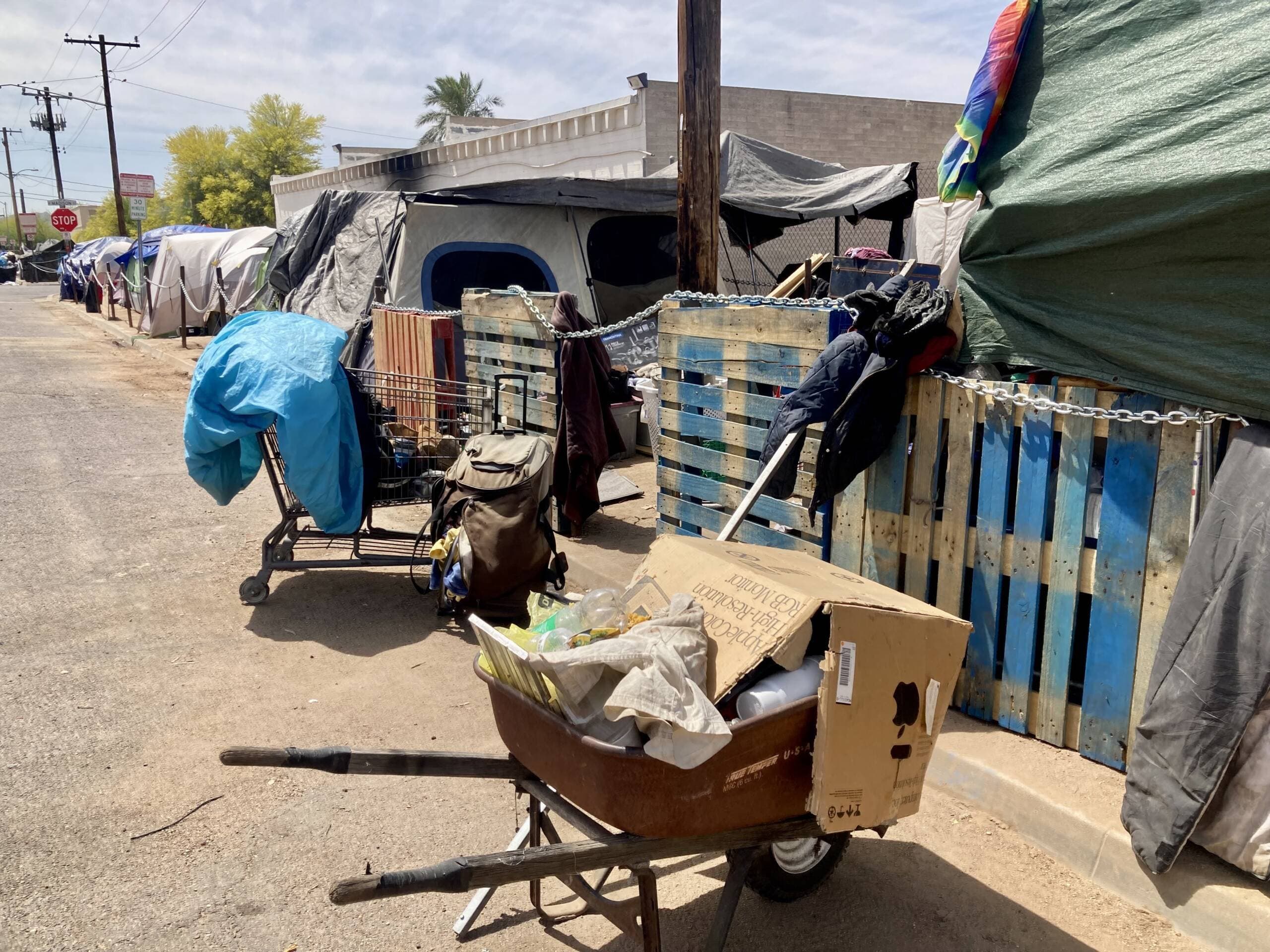
Last year, a group of business owners sued the city, claiming Phoenix encouraged people to congregate at the encampment by failing to enforce laws against camping, drug use and public nuisance.
“In the city of Phoenix, you can watch police officers drive by — walk by — as people are urinating in public. They do nothing,” says attorney Ilan Wurman.
One of the business owners he represents, Joel Coplin, also lives in the Zone. In February, Coplin filmed police and paramedics responding to reports of a body discovered near his art gallery. Coplin says he doesn’t blame his neighbors in the tents for all the problems. In fact, he’s welcomed several into his home and painted tender scenes from their lives.
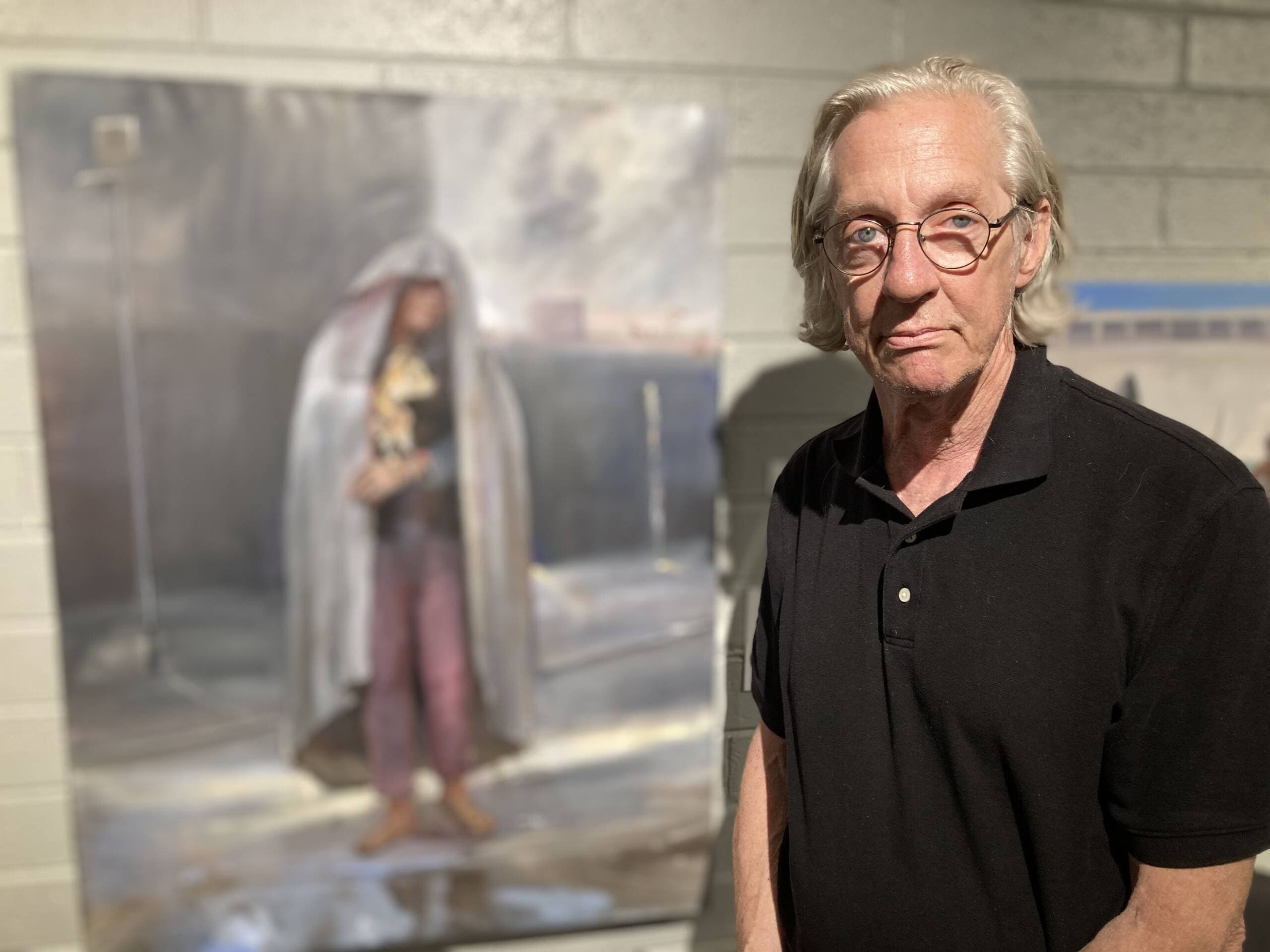
“There’s human tragedy going on left and right,” he says. “I’m hoping for relief. Chances are it’s just going to go on and on. But it’s a vast problem and it needs to have a big, forward-thinking solution.”
Meanwhile, the ACLU filed a separate federal lawsuit against the city, which resulted in a judge ordering police and city officials to stop sweeping campsites and removing personal belongings as long as there aren’t any indoor shelter beds for people to use.
Coplin agrees that forcibly removing the tents isn’t the answer. “It would be a travesty if they came in and forced everybody out and didn’t have a place for them to go,” he says. “That’s not what we’re looking for.”
Phoenix to ‘enhance’ the effort
The ACLU says it has reached a settlement with the city in its lawsuit.
Phoenix officials are working to clean up the camp and to get more people into shelter, says Rachel Milne, who directs the newly formed Office of Homeless Solutions.
“Our infrastructure was not prepared for the huge increase in homelessness that we’ve received and I think that's what cities across the country are dealing with,” says Milne, adding that an influx of federal pandemic relief money has helped boost what the city is spending. “We are functionally full in our shelter beds in the city of Phoenix every night.”
That is changing. Six hundred new shelter beds came online in the past year, and 800 more are in the works, Milne says. She adds that officials have already voluntarily cleared more than 120 people from the Zone, and offered them services and a temporary place to stay indoors.
The city is also close to announcing a plan for a structured outdoor campground with shade, bathrooms and security.
Advertisement
By July, Milne says the Zone will “look a lot better than it looks now.”
Thin line between home and homelessness
So far, however, addressing the root cause of the homelessness crisis has been elusive.
In Metro Phoenix, home prices have soared. Nearly 30% of Phoenix-area residents who live in apartments spend more than half of their paycheck on housing, according to data from the Maricopa Association of Governments.
That means that there’s little money left over in case of an emergency.
Mark Bueno, a doctor with Circle the City, sees the consequence of that burden inside the Zone. When he parks his mobile medical clinic on the street, patients line up to see him. They suffer from wounds that won’t heal, burns and other ailments like cirrhosis of the liver.
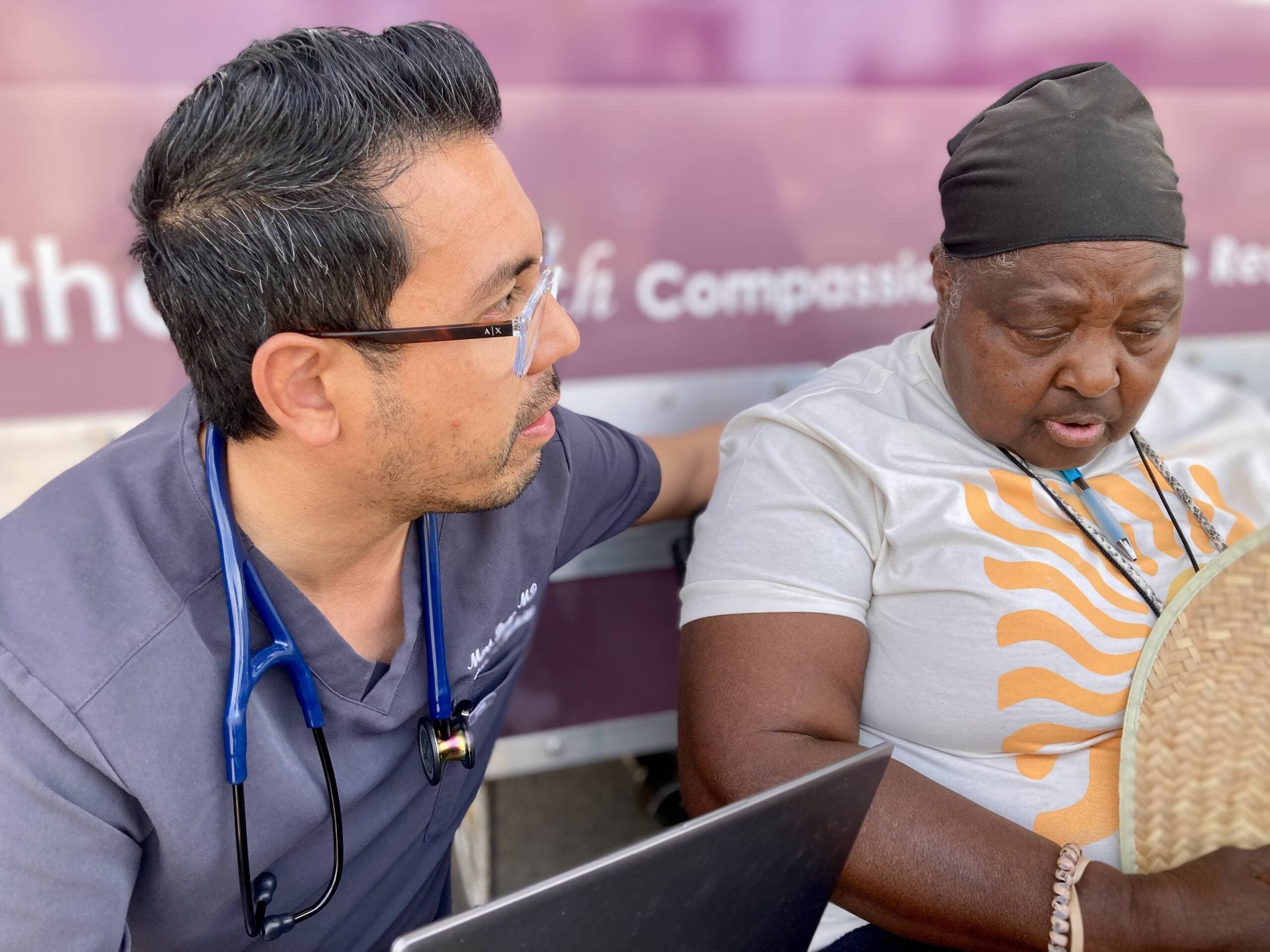
“They come and see me for medical issues, but I truly believe that this is a housing issue” Dr. Bueno says. “They're not on the street because of their heart disease. They're out here because they can't afford a house.”
On a recent afternoon, a patient named Jayme Barhenburg came to his clinic looking for help with painful blisters that cover the soles of her feet.
She says she knows there’s an effort underway to clear her tent away from the Zone, but she’ll refuse if she’s offered a place at a shelter.
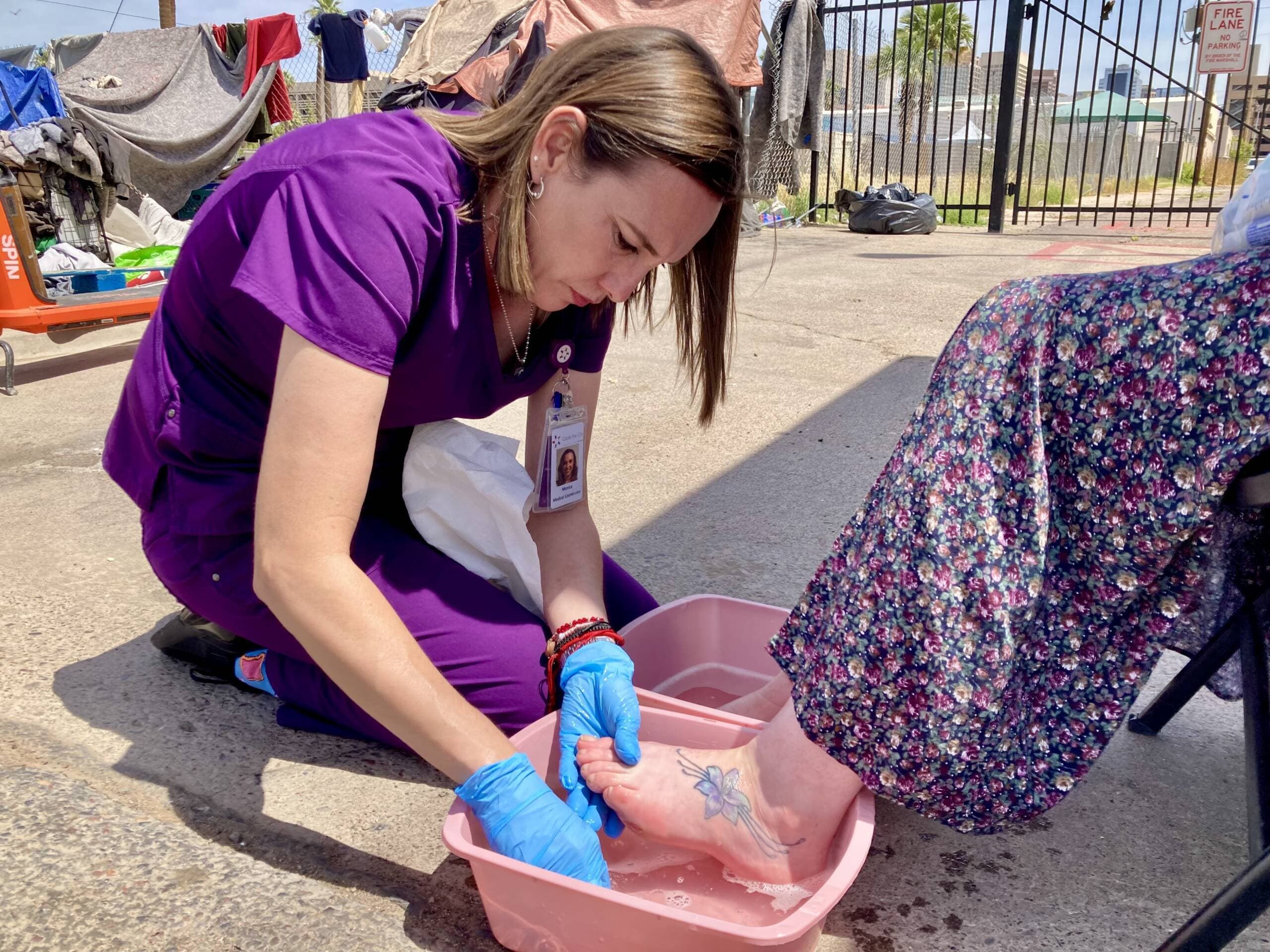
“It’s a jail inside the homeless shelter,” she says. “I don't want to be in there.”
Barhenburg says life in the Zone is stressful, but she doesn’t know where else to go. For a brief moment she, is overcome with relief as a member of the mobile medical clinic washes her injured feet with warm water and clips her toenails.
“It's nice that people are being Christlike,” she says.
This segment aired on April 28, 2023.
